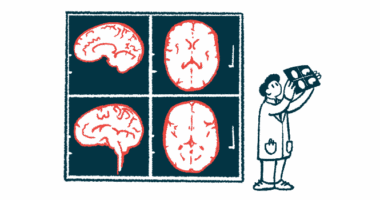Canadian Agency Recommends Enspryng Costs Be Reimbursed

Enspryng (satralizumab), a therapy for adolescents and adults with neuromyelitis optica spectrum disorder (NMOSD), has been recommended for reimbursement through Canada’s public drug plans, if certain conditions are met.
Among the conditions established by the Canadian Drug Expert Committee (CDEC) for Enspryng cost reimbursement is a price reduction by 80% to 89% that makes the treatment more cost-effective. The CDEC is a committee of the Canadian Agency for Drugs and Technologies in Health (CADTH).
CADTH says Enspryng is not cost-effective at the submitted price, expected to be approximately CAD $132,300 (about $109,300 US) per patient in the first year and CAD $122,850 (about $101,500) in subsequent years. If the price is not reduced, there may be delays in treatment for eligible patients, who might require alternative treatment to prevent relapses.
In addition, the treatment should only be offered to patients who experienced at least one relapse in the past year despite the use of other accessible preventive treatments, or who cannot tolerate other therapies. Enspryng should not be prescribed during a relapse episode and the maximum duration of the initial authorization will be 12 months.
The CDEC also recommended that neurologists with expertise in treating NMOSD should assess patients’ Expanded Disability Status Scale (EDSS) score — a measure of disability — every six months. Eligible patients must have an EDSS score of 6.5 points or less at the time of treatment initiation, and reimbursement will be discontinued if that score reaches 8 points or higher.
Enspryng is approved in Canada to be used in NMOSD patients, 12 years and older, who have elevated levels of abnormal antibodies against aquaporin-4 (AQP4), a protein channel that carries water across cell membranes of supporting cells in the nervous system.
This attack leads to inflammation and damage of the optic nerve and spinal cord, causing a number of symptoms. Enspryng is designed to block interleukin-6 (IL-6) receptors, which play an important role in inflammation.
Other available treatments that prevent relapses include immunosuppressants, immunomodulators, and corticosteroids, and are associated with numerous adverse effects. Still, there remains a need for medicines effective in preventing relapses and have minimal side effects.
The recent recommendations were based on data from two Phase 3 clinical trials: SAkuraStar (NCT02073279), which investigated Enspryng in 83 NMOSD patients ages 18 to 74, and SAkuraSky (NCT02028884), which evaluated the medicine in combination with other immunosuppressant therapies in 95 patients, 12 to 74 years of age.
Participants were randomly assigned to received placebo or 120 mg Enspryng by subcutaneous (under-the-skin) injection at weeks 0, 2, and 4, and every four weeks thereafter.
In both trials, patients with NMOSD who were AQP4-positive experienced fewer relapses with Enspryng than with a placebo. These results were considered clinically meaningful.
Additional support for approval came from patient perspectives following an online survey conducted by the Multiple Sclerosis Society of Canada. Respondents hoped Enspryng would reduce attacks and disability and allow them to administer the therapy at home. This may enable people living with NMOSD to continue working, sustain family and social connections, improve quality of life, and decrease the need for caregivers.
In making its recommendation, the CDEC also considered input from four clinical specialists with expertise diagnosing and treating NMOSD and a review of the economic model for the medicine submitted by the sponsor, Chugai Pharmaceutical (a subsidiary of Roche).
Adverse events in those treated with Enspryng ranged from 90% to 92% compared to 75% to 95% in the placebo groups. The most common adverse events included urinary and upper respiratory tract infections, headaches, the common cold, and injection-related reactions.





